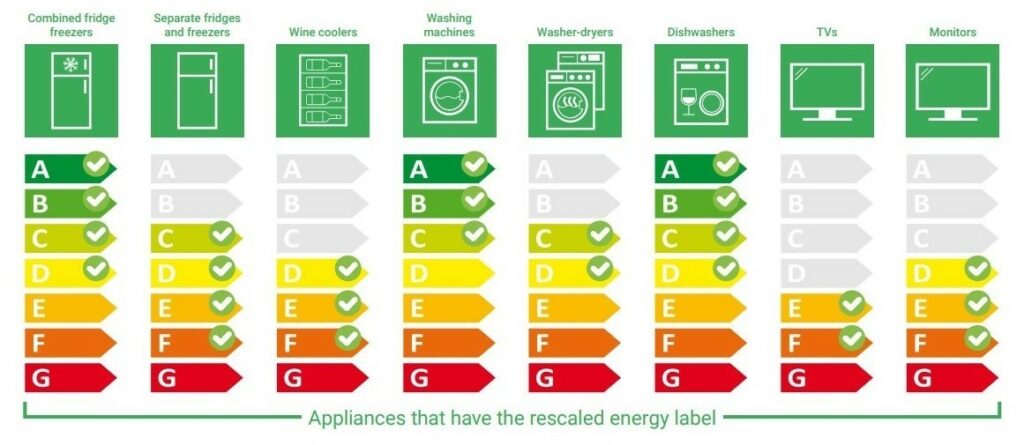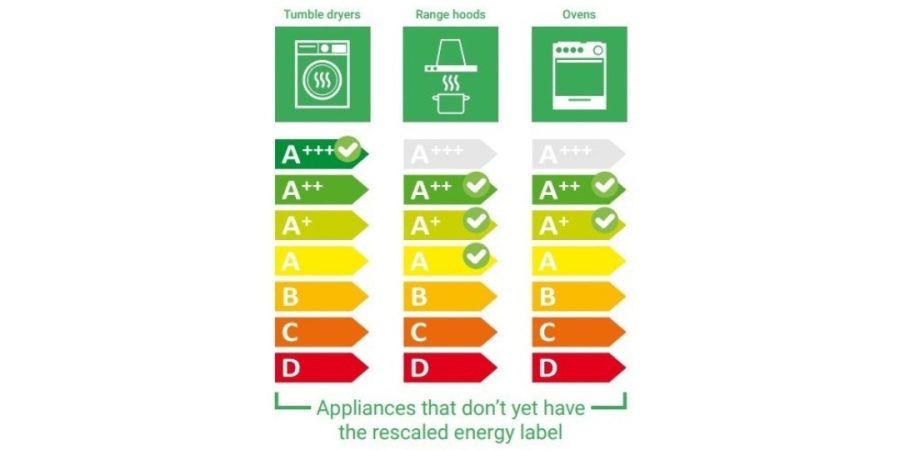No products in the cart.
Energy Efficiency
Energy efficiency plays a large factor when making a decision on your new appliance, not only will your energy consumption have an impact on the environment, but it will also have an effect your energy bills. Discover how our appliances are rated, what makes an appliance energy efficient and features to look out for when making your decision.
What Makes An Appliance Energy Efficient?
Energy efficient appliances use modern technologies that consume less power and resources to use in comparison with other appliances of the same category. Whilst electricity usage is a main concern for most, it is also worth looking into appliances that have a reduced gas or water usage further saving on precious resources. When looking for a new appliance keep an eye out for its energy label which will give you an insight into how much energy the appliance will consume during its regular use.
How Do Energy Labels Work?
In 2020 the new scale for energy labels was released, appliances are tested on how much energy they consume during a typical use, which in turn then gives them a rating on a scale of A to G. A being the most efficient of their category and G being the least efficient. However, some of our older appliance models still use the old scale which ranged from A+++ to G, with A+++ being the most efficient of their category.
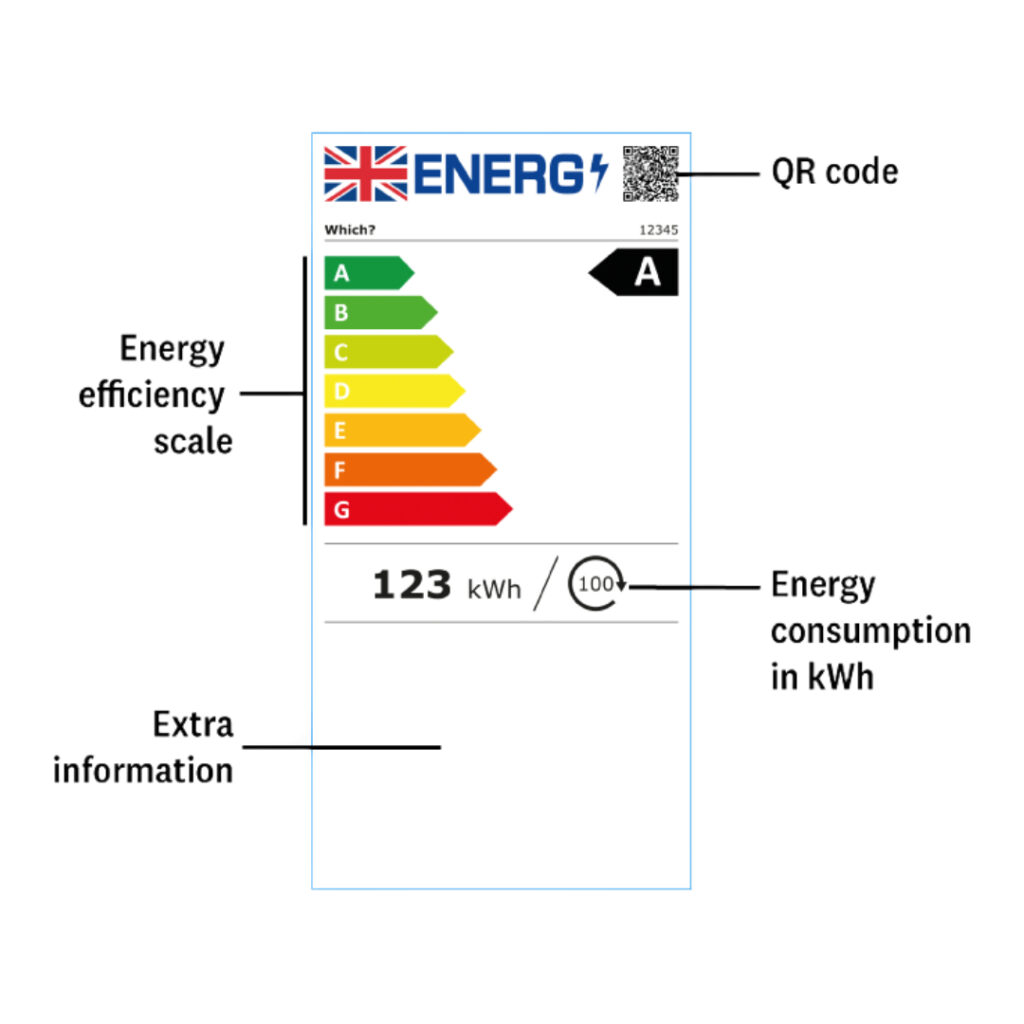
QR code
QR codes are now included on all new energy labels, this code can be scanned by your device to find out more information about the energy rating and appliance.
Energy Efficiency Scale
The newer Energy Efficiency Scale is measured from A to G, with A being the highest energy efficiency rating of the respective category and G being the lowest.
Energy Consumption
Energy Consumption is measured in kWh (Kilowatt-Hour) which is the measurement of energy used, 1 Kilowatt hour is the equivalent of powering a 1000 Watt appliance for an hour. These units vary from appliance to appliance with some being measured over 100 uses, others measured per annum and televisions being measured over a set amount of hours.
Extra Information
Extra information is typically depicted with symbols relating to the features of the appliance, this can include load sizes for washing machines and tumble dryers, net volumes for fridges and freezers and even the noise level that the appliance emits.
Information Symbols, Explained
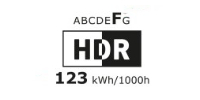
HDR Energy Efficiency
Applicable to Televisions, Scale based on Screens using HDR (High Dynamic Range).
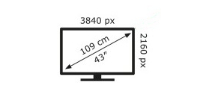
Screen Diameter
Applicable to Televisions, Includes cm, inches, & pixel resolution.

Total Frozen Capacity
Applicable to Fridge Freezers & Freezers, Net Volume measured in litres.
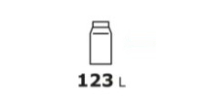
Total Fridge Capacity
Applicable to Fridge Freezers & Fridges, Net Volume measured in litres.

Noise Emissions
Applicable to most appliances, Noise emissions measured in (dB(A)) and emission class.

Spin Dry Efficiency
Applicable to Tumble Dryers & Washer Dryers, Assigned an efficiency class.
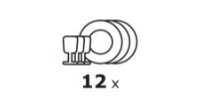
Rated Capacity
Applicable to Dishwashers, accounts for how many dishes can fit into a single load.
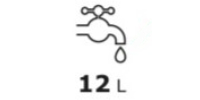
Water Consumption
Applicable to Washing Machines & Dishwashers, Measured in litres used over a single cycle.
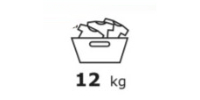
Clothing Capacity
Applicable to Washing Machines & Tumble Dryers, the net weight of clothing that can be loaded in a single cycle.

Program Duration
Applicable to Dishwashers, Washing Machines & Tumble Dryers, Measured in Hours & Minutes.
About The New Energy Labels
The Energy Label has been an important factor for those looking for new appliances and electricals for over 25 years, helping customers to identify and select more energy efficient products. Due to the increased demand for energy efficient, environmentally friendly options, the energy consumed by these newer electricals has reduced massively.
This means that the older labelling scheme ranging from A+++ to G had become less effective while the newer label has been optimised and revised to give customers a better understanding. Products are now rated on a scale of A to G, with A rated products being the most energy efficient in their category.
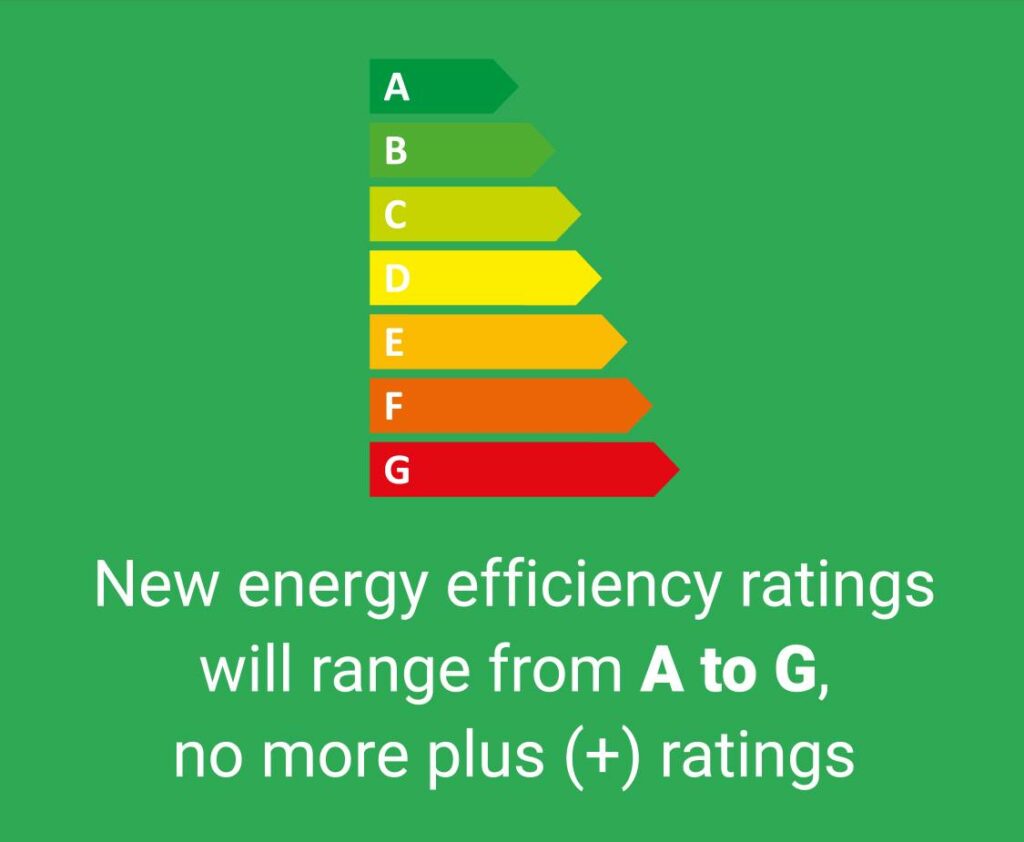


Important Features Of The New Energy Label
The Scale of energy efficiency isnt the only thing that has changed on these new labels, there are lots more important features to help you make the best decision when it comes to looking for a new appliance. These labels now come with a handy QR code you can scan on your device which will provide you with even more information about the appliance you’re looking at and icons and symbols that are easier to understand.
Learn More About Each Category
Find out more about what you can expect from each categories labels, as well as which grade is considered being energy efficient.
What Is Considered Energy Efficient?
Depending on the category of appliance or electrical you’re looking at, each will have a different grade which is deemed to be energy efficient. Energy classes which are marked in grey are those which are not yet commonly found on the UK market. Product types of each category may have a different recommended rating based on size, usage, and integration type.
Appliances Using The Old Label
You may find that some of our products may still be using the old label, these appliances and electricals include older models of appliances developed before the new re-scaled label was created, as well as all tumble dryers, range hoods and cookers. These products are still rated on their energy efficiency using the old scale of D to A+++, with D being the least efficient in its category and A+++ being the most efficient.
(Click To Enlarge)
Things You Should Consider
Depending on the category of appliance or electrical you’re looking at, each will have a different grade which is deemed to be energy efficient. Energy classes which are marked in grey are those which are not yet commonly found on the UK market. Product types of each category may have a different recommended rating based on size, usage, and integration type.
Why Size Matters
Your appliance or electrical size will have a large impact on the amount of electricity consumed during its regular use, for example larger refrigerators with an efficiency class of C may use more power than a smaller refrigerator with an E class rating. For those who are looking to save on their bills, make sure to look for the energy consumption on the provided energy efficiency labels. This is a general rule that also counts for many kitchen appliances as well as television screens.
Eco Settings
A feature most commonly found on washing machines, washer-dryers and dishwashers, eco settings are modes designed to use less power and resources in comparison to using a regular mode on the same appliance.
Opt For Heat Pump Technology
we recommend choosing a Tumble-Dryer with heat pump technology, these efficient machines can help save up to 60% on electricity in comparison to a traditional condenser or vented tumble dryer. Heat Pump technology re-uses the heat output already created by the tumble dryer for the continuation of the cycle, and what’s more is that because on average these tumble dryers have a lower temperature it will be less abrasive on your clothing.
Choose A Washing Machine With Load Detetction
A lot of modern day washing machines come with a load detection feature which can base a washing program around the weight of your load, this helps to only use resources as required and will help to save on any extra wastage as well as putting a stop to over-washing your clothing.
Use Lower Temperatures
Using lower temperatures on your wash cycle will help you to further save of energy with most modern day machines having options for as low as 20 degrees. This will also reduce any heat damage that your clothing may typically experience as well as allowing you to wash more delicate fabrics that would typically be hand-wash only.
Choose A Fan Assisted Oven
Fan assisted ovens typically heat up faster in comparison to a standard oven cavity as well as reduce cooking times for food. These fans hep circulate heat throughout the oven meaning you can ensure more even cooking as well as reducing your energy consumption.
Brightness Settings
Televisions especially tend to use a high amount of electricity, so whilst finding a TV, look for software capable of altering your brightness settings. This can help reduce the amount of power used whilst you watch and as a bonus works great for evening and night-time viewing.
Get In Touch
Get in touch with our helpful team today for any questions or professional advice.

